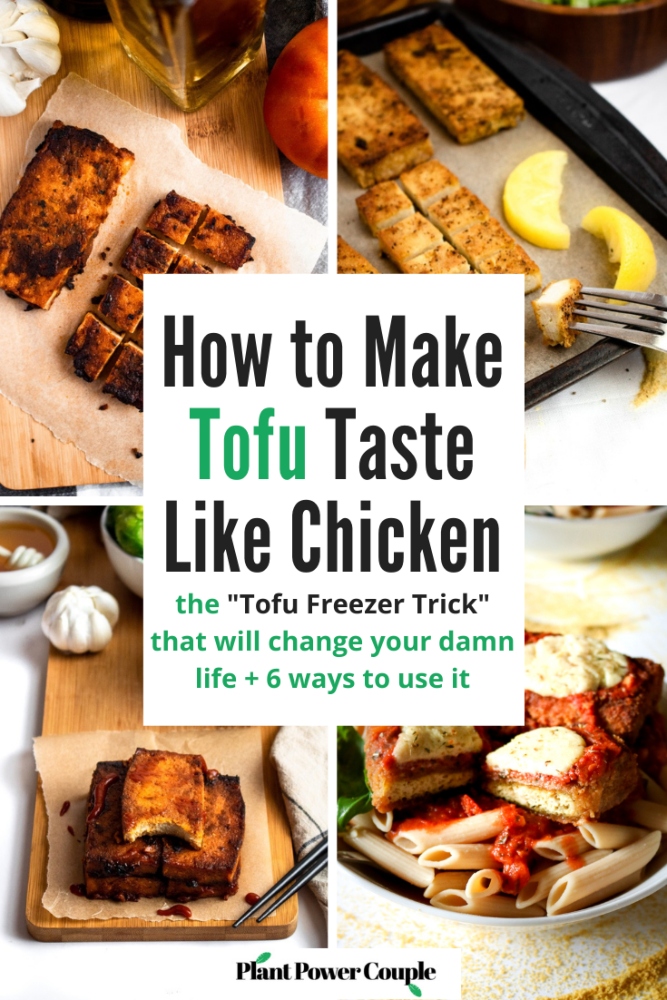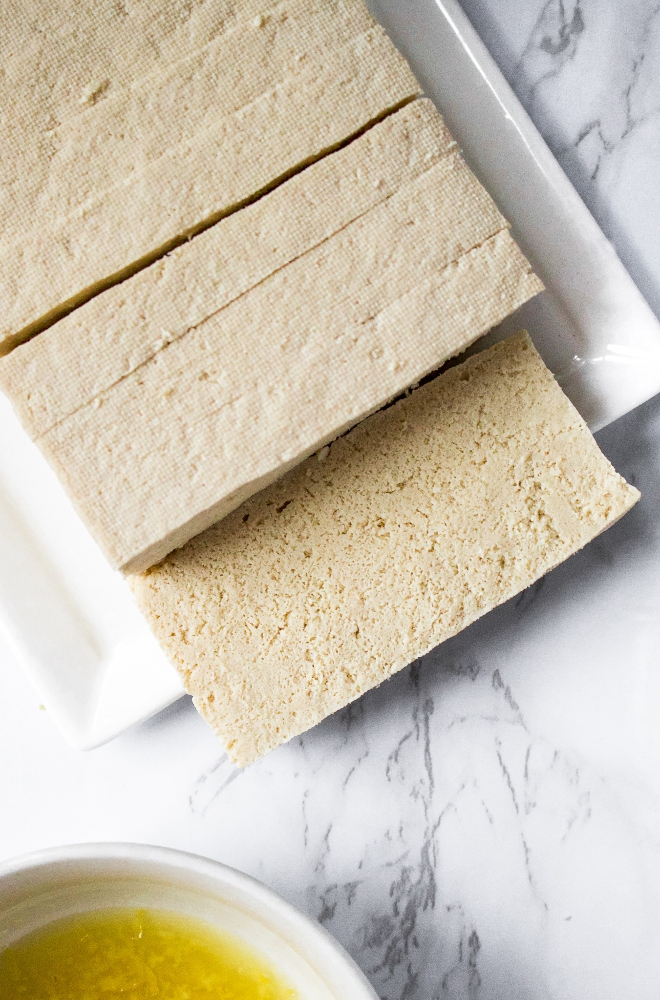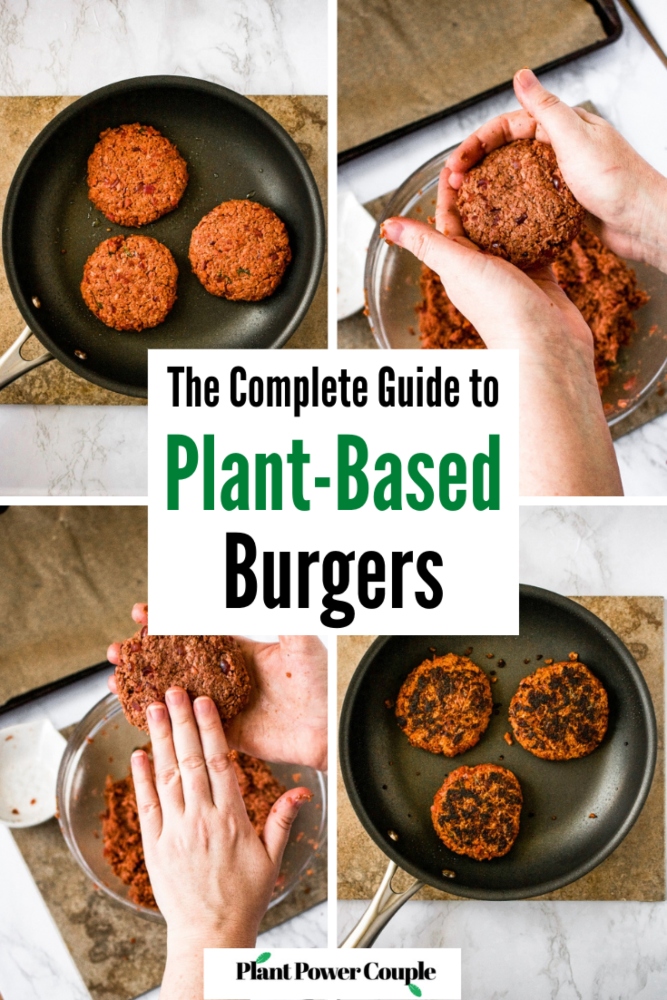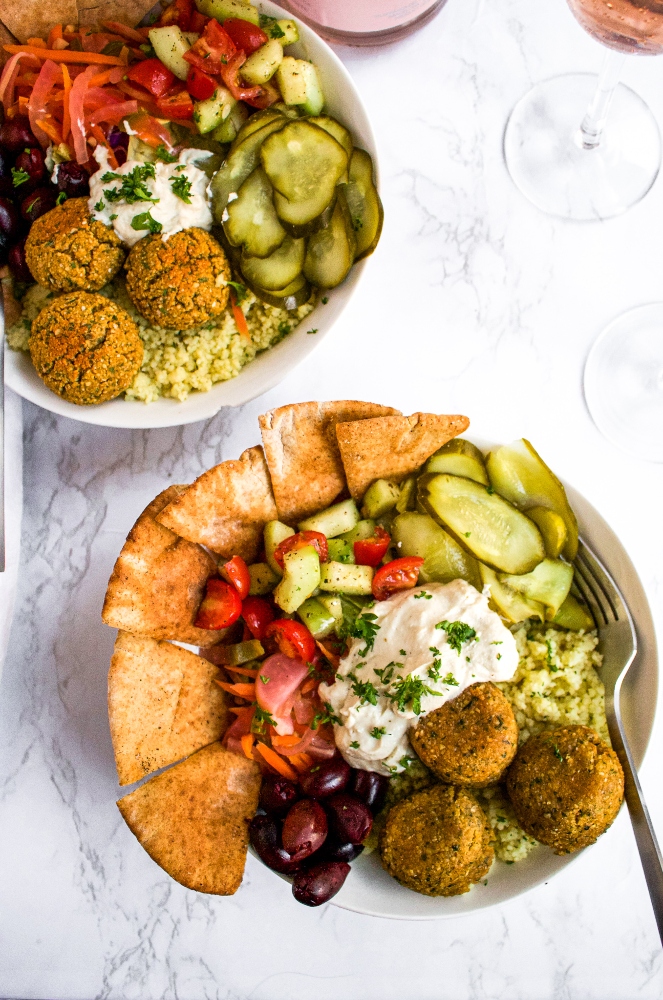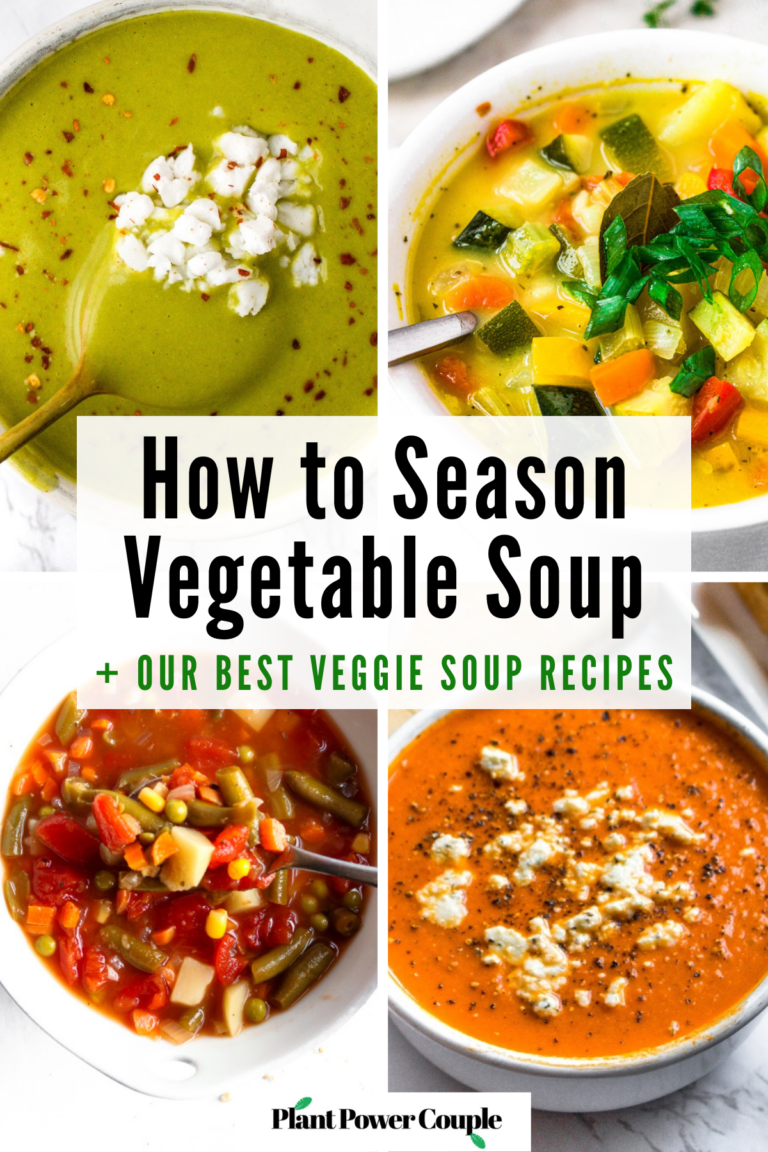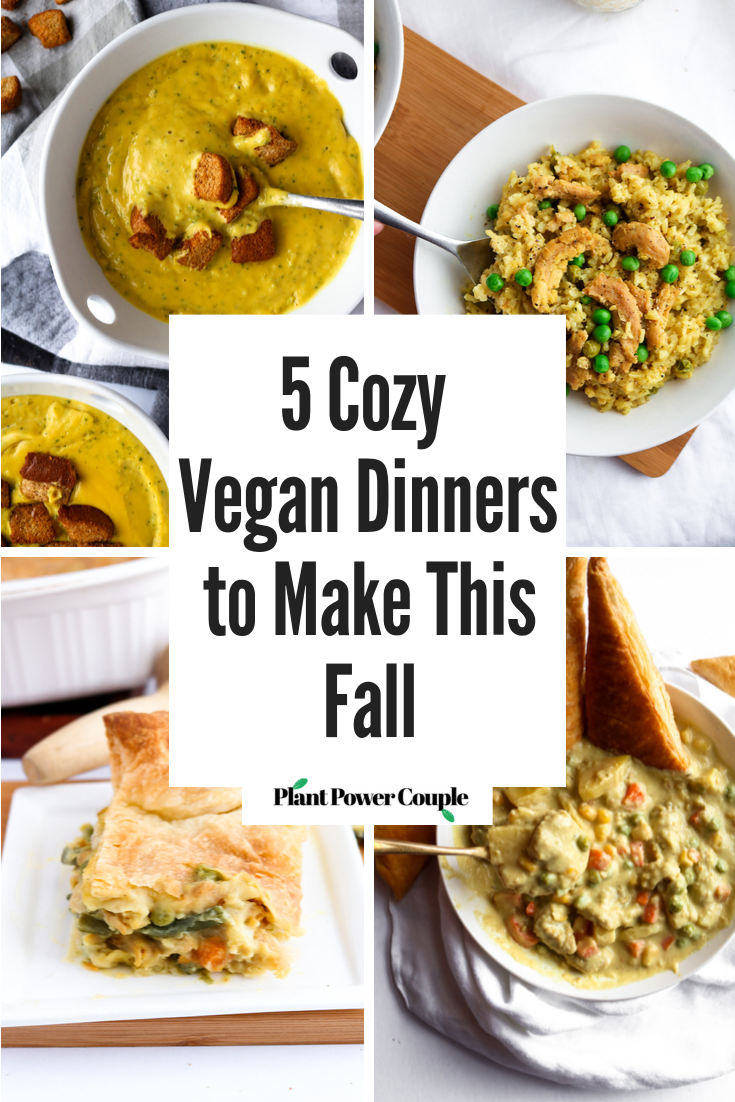How to Start a Vegetable Garden
Vegetable gardening can be a little overwhelming for beginners just getting started. But growing your own vegetables at home is one of the most satisfying and rewarding hobbies. With our top gardening tips and great recommendations for your garden, you’ll find almost everything you need to grow your first garden filled with your favorite veggies to use in our favorite vegan recipes!

This post contains affiliate links. As Amazon Associates, we earn a small commission from qualifying purchases (at no cost to you). Click here to read our full policy about affiliate links. Thank you for shopping our affiliate links, as it helps us keep the free vegan recipes coming your way!
Growing a Garden for Your Vegan Kitchen
It’s that time of year again when gardeners, both seasoned and new, prepare their yards for planting. If you’re new to growing a vegetable garden, it can be a bit overwhelming knowing where to begin.
That’s why we put together this guide for vegetable gardening for beginners. With a little planning before planting, even the most novice gardener with the smallest space can yield an impressive bounty. Yes, you can be growing produce even if you don’t have a traditional dirt yard!
We only have a very small gardening area in front of our NE Philly rowhome, and it is a source of immense pride and joy. Not to mention growing vegetables at home offers a reliable and continual source of fresh herbs and veggies for our vegan recipes!
We love to use our garden hauls in all sorts of our delicious vegan recipes that we’ve included links to throughout this post. There’s also a quick guide to planting at the bottom of the post for your reference.
If you’re just starting your new favorite hobby, be sure to check out the Gardening Section for Beginners and our Amazon storefront for garden tools, planters, growing guides, and all your gardening needs. We’ve also included some “no-fail” plant options for any total novice gardener!
Save this post!
Add your email below to to get this post and more right in your inbox!
Know Your Limitations, But Think Big
Before you start planting, you gotta start planning. Consider your growing space, available time, and energy. And of course, what you want to eat! More on that below.
Vertical gardening can be a game-changer for those with limited room. Utilizing or creating walls, trellises, or hanging baskets helps maximize yield in small spaces.
Bucket gardening is also a great option. We’ve included several suggestions in the Small Space Gardening section below.
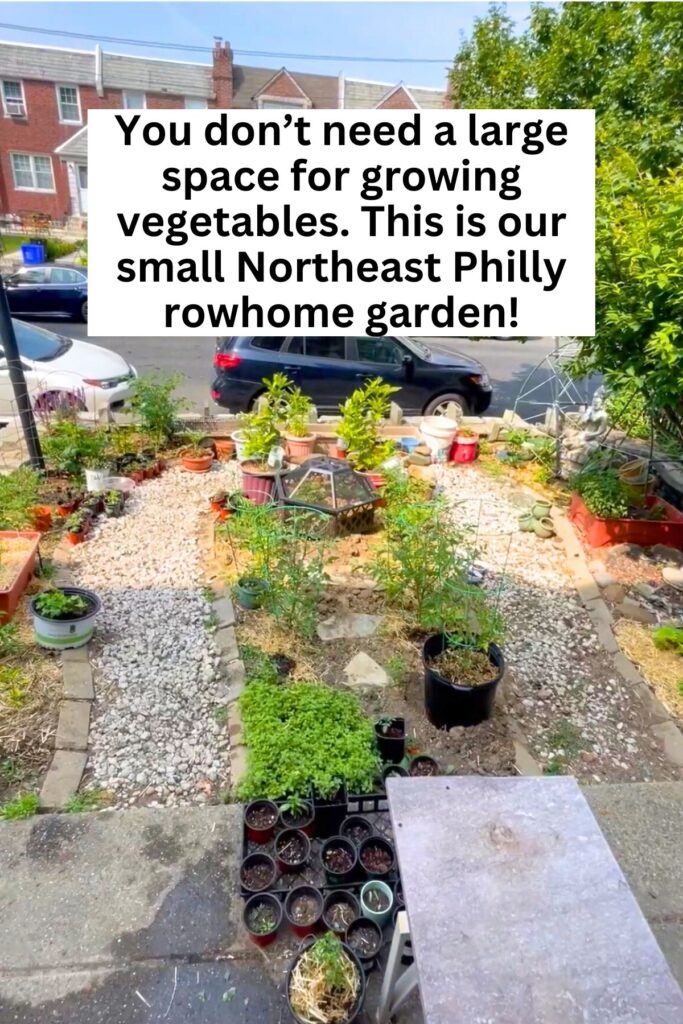
Plant What You Eat…Within Reason
The best advice we can offer for how to start a vegetable garden is simple: Grow what you love to eat. Skip the plants you don’t truly enjoy, no matter how easy or inexpensive they seem.
Trust me, we learned the hard way with eggplants a few years ago. Turns out, we don’t really love them all that much!
Our yearly must-grow list includes:
- Tomatoes – Determinate tomato varieties are the best for small space gardening. We grow a couple different determinate & indeterminate tomatoes, mostly cherry (Indeterminate) and Roma (Determinate) tomatoes. These are great to use in our Savory Cherry Tomato Jam, Baked Feta Pasta Dish, Cucumber Tomato Salad, and of course Homemade Marinara Sauce.
- Cucumbers – A garden must for pickling, salads, and sandwiches. We love to use our cucumbers for our No-Cook Refrigerator Dill Pickles, Spicy Maple Bourbon Pickles, Buffalo Ranch Pickles, and as an integral part of our Bagel Veggie Sandwich.
- Peppers – Grow your own jalapenos, shishitos, poblanos, habaneros, and more!! And saving and growing peppers from seeds is so very easy! We love using the peppers in our Jalapeno Corn Fritters, Vegan Sausage and Peppers, and Spicy Garlic Hummus. We grow so many peppers, we even created a round-up of 24 Vegan Recipes with Peppers that goes way beyond the basic stuffed pepper recipe!
- Squash and Zucchini – Perfect for Zoodle Ramen, Vegan Squash Casserole, Creamy Zucchini Soup, Vegetable Barley Soup, and our incomparable Roasted Vegetable Pizza.
- Beans and Peas – These grow easily and are perfect for vertical gardening. We love growing them for our Spicy Sauteed Green Beans and Homemade Campbell’s Vegetable Soup
- Various Herbs – Herbs should be part of any kitchen garden. Herbs are essential for making Fresh Vegan Pesto, Vegan Herb Biscuits, Vegan Minestrone, and so, so much more. Herbs are also a necessary component for seasoning vegetable soup.
Grow Harder-to-Find or Expensive Produce
Green bell peppers and regular tomatoes are usually pretty inexpensive. Want to get the most value out of your small space garden? Grow the pricier produce you usually buy at the store:
- Specialty peppers, like shishito or specific hot peppers and chiles can be expensive but are easy to grow.
- Heirloom or specialty tomatoes often come with a hefty price tag at the market.
- Bok choy and other Asian greens are both delicious but pricey and will grow quickly and cheaply in your garden.
Don’t Forget the Herbs!
Herbs are non-negotiable. They’re expensive to buy fresh but incredibly cheap and easy to grow. You can plant them in small pots on windowsills, balconies, or garden edges.
We grow most of the standard kitchen herbs and a couple that are less common and hard to find, like our chocolate mint or lemon balm.
Herb essentials for your garden:
- Basil – A must in every cook’s garden! Also easy to propagate so you can continuously be growing new plants!
- Oregano – Oregano is low-maintenance and thrives even in poor soil. Greek or Italian oregano is a robust herb essential in cooking.
- Rosemary – A hearty evergreen you can source from all year long.
- Thyme – Another kitchen essential! Thyme adds depth to stews, soups, and roasted vegetables. It’s drought-tolerant and thrives even in rocky soil.
- Parsley – Flat leaf or curly.
- Cilantro – For those who celebrate. (I do; B does not.)
- Mint – Learn from my mistakes: Grow mint in a large container to prevent it from taking over your entire yard!
Check out our other posts featuring herbs: Favorite Herbs to Grow for Cooking (coming soon!) and Best Herbs for Vegetable Soup.
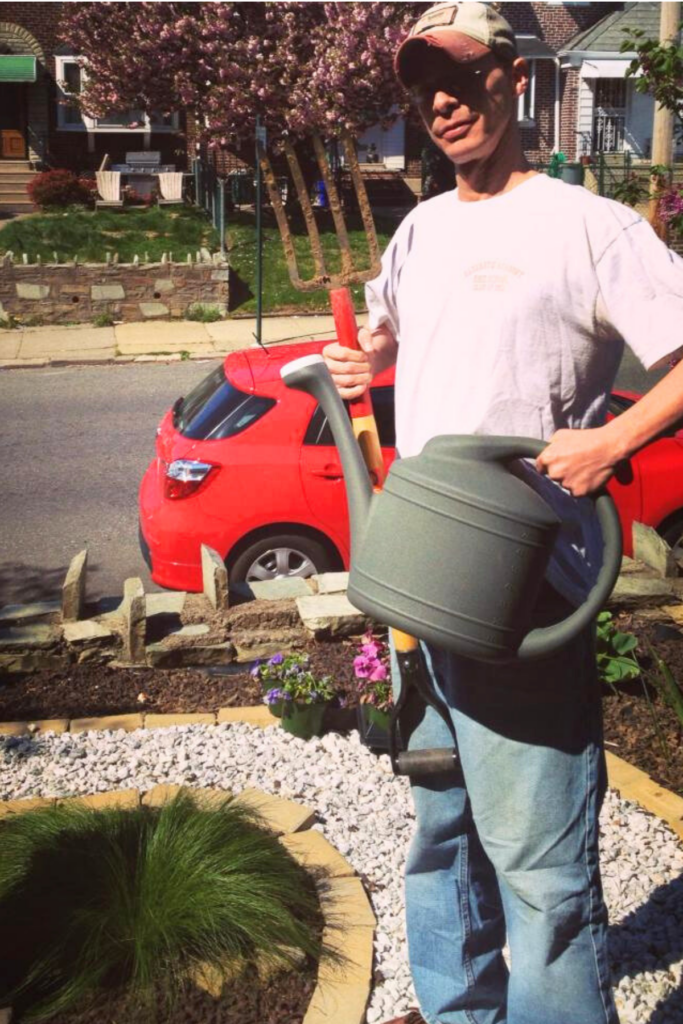
Know Your Zone
Different parts of the country, known in gardening parlance as “zones”, have different windows for optimal planting and gardening. It’s important to know your zone.
If you’re in the US, you can use this Garden Zone Map from the USDA to find what gardening zone you’re in.
Know When to Grow
Timing is everything in gardening. Starting your garden too early or too late can mean the difference between a bumper crop and a very disappointing season.
Familiarize yourself with which plants thrive in cooler weather and which prefer the warmth.
- Cool-weather crops: Lettuces, kale, collard greens, spinach, bok choy, peas, broccoli, Brussels sprouts
- Warm-weather crops: Tomatoes, peppers, cucumbers, melons, okra, squash
Gardening Tips For Beginners
Starting a garden from scratch for the very first time can feel like a lot, but it doesn’t have to be! If you’ve never planted anything before, follow these simple gardening tips and tricks to set yourself up for success.
See our vegetable garden planting guide section below for more information and tips. And be sure to check out our Amazon Gardening Store for everything you’ll need from the best garden boots to the world’s most beautiful composter and everything in between.
- Start Small – Instead of planting a huge variety, choose 3-5 easy-to-grow plants you love to eat. Herbs, lettuce, cherry tomatoes, and peppers are great beginner-friendly choices.
- Choose the Right Spot – Most vegetables need at least 6-8 hours of sunlight daily. Observe your growing space for a few weeks in advance and pick the sunniest areas for planting.
- Get the Right Tools – A large garden fork, aerator, and digging spade are obvious. But a set of hand tools in gardening is essential to get down to where the action is. A good set of shears, a trowel, and a small hand rake/aerator will be the gardening tools you use most often.
- Use Quality Soil – Good soil is the foundation of a healthy garden. Look for organic potting soil or mix in compost to add nutrients. It’s also a great idea to make your own compost to add to the soil when you can.
- Water Wisely – Overwatering is a common mistake. Most plants thrive with just 1-2 inches of water per week. Stick your finger in the soil – if it’s dry more than an inch down, it’s time to water! Create a garden hose guide by adding higher edging or planting stakes along the edge of your growing area so the hose doesn’t accidentally snap your plants.
- Keep It Simple – Raised beds, large pots, or container gardening make it easier to manage a small, thriving garden without feeling overwhelmed.
- Celebrate Small Wins – Gardening is a learning process. Even if a few of the plants don’t make it, you’ll gain experience and confidence along the way!
I also suggest seeing if your local library can recommend a gardening group nearby, or join one of the hundreds of thousand avid and beginner gardeners on Facebook groups. I suggest starting with the name of your hometown followed by “garden”.
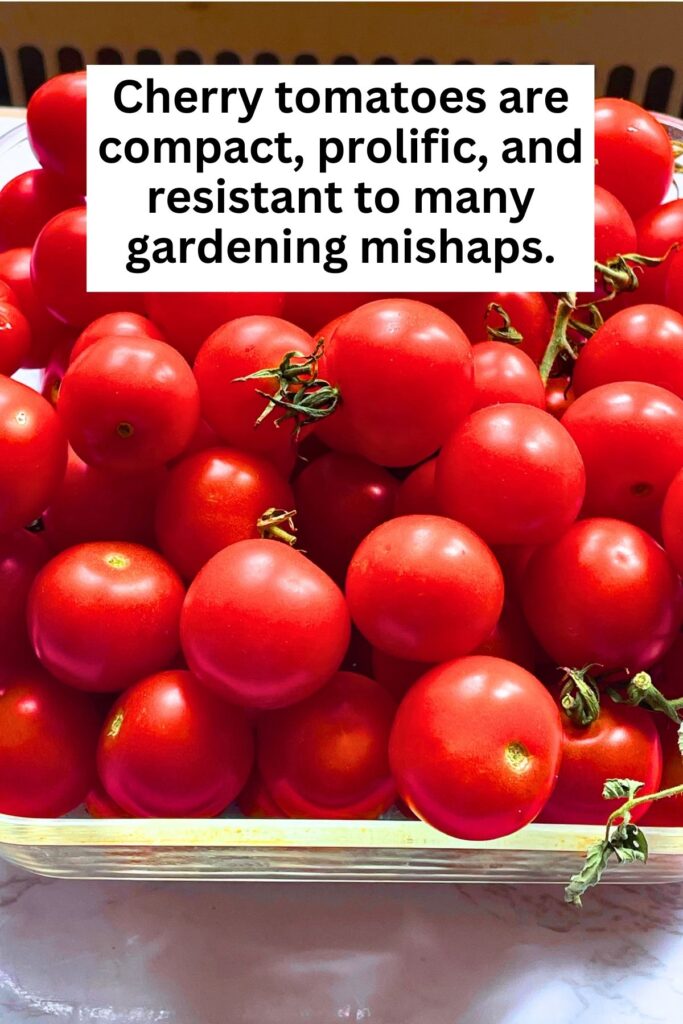
“No-Fail” Plants for Anyone to Grow
If you’ve tried gardening before and struggled to keep plants alive, don’t worry! Some plants will practically take care of themselves, and these hardy, low-maintenance plants are perfect for novice gardeners.
- Mint – Almost impossible to kill, but use my early gardening experience as a cautionary tale and keep it in a container.
- Green Onions (Scallions) – Regrow from store-bought ones! Just place a 2-3 inch piece with white roots in water or soil, and they’ll keep growing back.
- Basil – A tremendously forgiving plant! Snip a few leaves for cooking, and it’ll grow back quickly.
- Rosemary and thyme – Great kitchen staples that, once established, are almost impossible to kill and will come back year after year..
- Cherry Tomatoes – Compact, prolific, and resistant to many gardening mishaps. Can also be easily grown in large containers.
- Radishes – One of the fastest-growing veggies, ready in just 3-4 weeks!
- Lettuce & Kale – Keep harvesting leaves, and they’ll keep growing. Perfect for fresh salads all season long.
If all else fails, try self-watering containers or automatic drip irrigation to take the guesswork out of watering.
With the right approach, even self-proclaimed plant killers can enjoy homegrown produce!
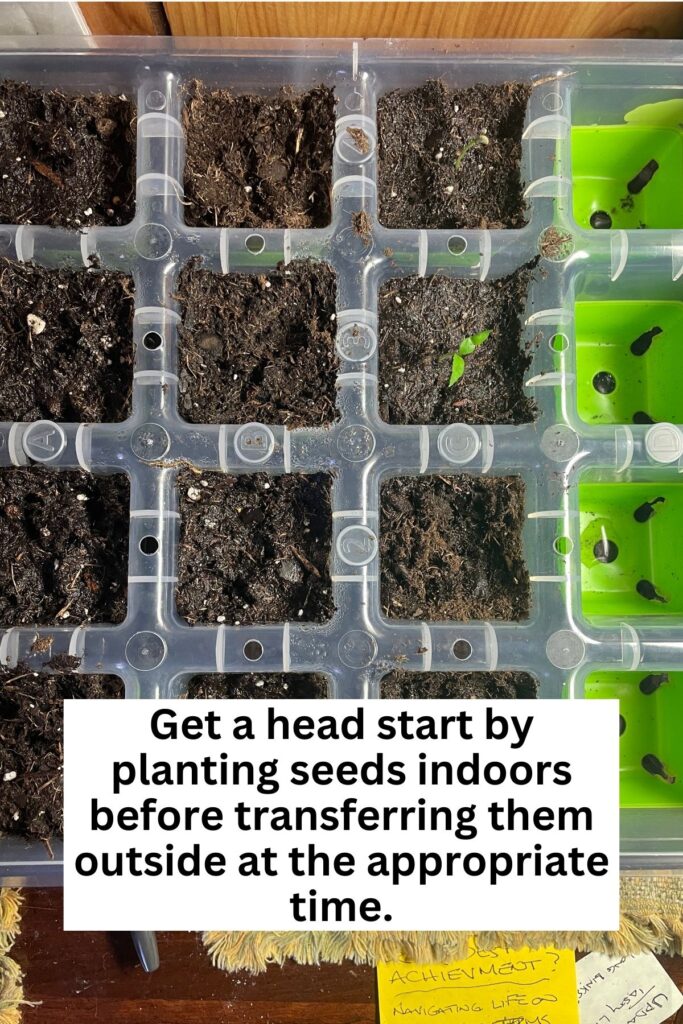
A Brief Garden Planting Guide
This is a brief how-to for how to grow cucumbers, tomatoes, peas, peppers, and the more common garden vegetables and herbs. We’ve also included some tips for small-space gardening and container or bucket gardening.
General Gardening Tips
- Use good, nutrient-rich, well-draining soil. Add compost or organic matter regularly to maintain a healthy balance to your soil.
- Most vegetables need 1-2 inches of water per week. Consider rainwater-gathering containers to cut down on costs.
- Most vegetables require at least 6-8 hours of direct sunlight for optimal growth.
- Ensure proper spacing of plants to prevent diseases and allow airflow for the best growth and harvest.
- Add mulch or small companion or pollinator plants to maintain soil temp, retain moisture, and attract insects that aid pollination.
Tomatoes
- When to Plant: After the last frost date; start seeds indoors 6-8 weeks before planting outside.
- Support with cages or stakes for vertical growth when growing tomatoes.
- The best pots for growing tomatoes are well-draining deep containers or buckets (5 gallon buckets if not bigger).
- Companion plants: Basil, chives, or marigolds all support growth and deter pests.
Peppers
- When to Plant: After the soil warms up, 2-3 weeks after the last frost. Start from seed indoors 6-8 weeks before expected planting date.
- Space 18-24 inches apart to allow for top growth and full fruiting.
- Use containers that are at least 12 inches deep for container gardening.
- Mulch the soil around the plants to maintain soil temperature and retain moisture.
- Companion plants: Basil, onions, and parsley repel pests and attract garden-friendly insects
Cucumbers
- When to Plant: After the last frost when soil temperatures reach at least 65-70°F (late spring to early summer).
- Plant 12-18 inches apart for bush varieties; 36-60 inches apart for vining types.
- Growing cucumbers on a trellis or cage is a great way to save space and improve air circulation, which reduces disease risk.
- Encourage pollination by planting flowers nearby or hand-pollinating if needed.
- Pick regularly when cucumbers are firm and before they become overripe. This also encourages continued production of cucumbers.
- Companion plants: Beans & Peas provide for a nitrogen-rich soil and Sunflowers off shade and vine support.
Beans and Peas
- When to Plant: Early spring for peas; late spring for beans, after frost.
- Vertical Gardening: Beans and peas love to climb. Use trellises or poles for pole beans and peas.
- Containers: Use pots that are at least 8 inches deep for bush varieties.
- Regular harvesting encourages more production.
- Companion plants: Corn or Sunflowers provide natural support for climbing beans.
Squash (Zucchini, Yellow Squash, etc.)
- When to Plant: Late spring when the soil is warm but before it starts getting too hot.
- Where: Full sun.
- These need plenty of space to grow and fruit properly. Grow vertically using a trellis to save some space.
- Plant in wide containers at least 24 inches deep.
- Hand-pollinate if necessary for better fruiting.
- Companion plants: Corn & Beans. These three plants all support each other and planted together form the classic “Three Sisters” combo.
Common Herbs (Basil, Mint, Parsley, Thyme, Rosemary)
- When to Plant: After the last frost for tender herbs; hardier, perennial herbs (like thyme and rosemary) can be planted earlier.
- Where: Most herbs love full sun; mint prefers partial shade as does cilantro in hotter climates.
- Containers: Herbs thrive in pots, allowing for easy access, pruning, and control.
- Vertical Gardening: Create or purchase a vertical herb wall or hanging pots for small spaces.
- Mint should be isolated in pots. It spreads quickly and aggressively and will take over your entire garden if you let it.
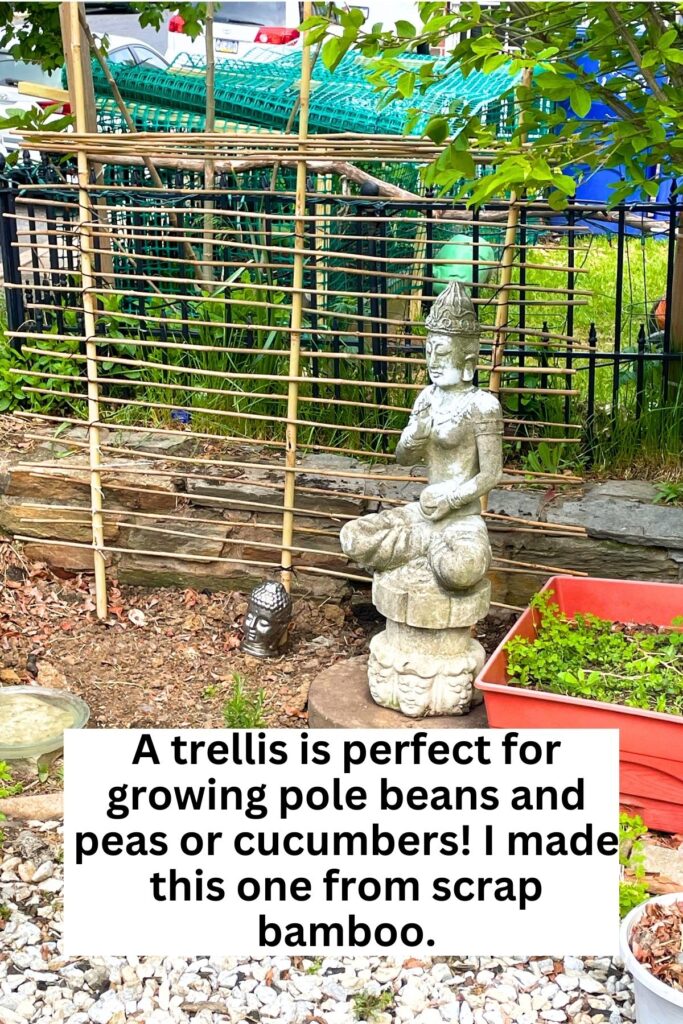
Maximize Your Space
Even a small gardening space can yield big results if you plan wisely. Here are a few strategies:
- Vertical gardening – Use trellises, shelves, stacked containers, and the like. Great for beans and peas, herbs, strawberries, and some varieties of tomatoes.
- Hanging Baskets – Great for strawberries or trailing herbs like thyme and even compact cherry tomatoes.
- Railing Planters – Utilize balcony or porch/deck rails for extra growing space with these planters that are designed to sit on the railing. Perfect for a small space herb garden.
- Bucket gardening – Many smaller vegetable plants and all herbs can be done in bucket or large container gardening to maximize your space. Use deep pots for root-heavy plants like tomatoes and peppers.
- Companion planting – Certain plants help each other thrive when grown together (e.g., basil with tomatoes). Conversely, some plant pairings will hinder growth.
- Succession planting – After harvesting a crop of quick growing vegetables, plant something new in its place to maximize your growing season.
- Grow Indoors – If you don’t have any growing space outside, you can try growing vegetables inside in an Indoor Gardening System. They’re also great for growing herbs.
Maximize Your Savings
Certain foods, like scallions or basil, can be regrown for years after a single purchase.
I purchase one basil plant from the store in May and begin propagating at least 5 cuttings from it to grow in the garden.
And we’re still using the green onions we started growing in the garden 5 years ago from a bundle purchased at the grocery store!
Identify and Save Seeds for Future Seasons
One of the most rewarding aspects of gardening is saving garden vegetable seeds from your successful crops for future planting.
Saving seeds from the produce you grow can help you become more self-sufficient, reduce future gardening costs, and ensure you’re growing plants you love and are well-adapted to your specific growing environment.
- Harvest at the right time: Let vegetables fully mature on the plant before harvesting seeds. For example, leave beans on the vine until they dry or let the cilantro bolt to coriander seed before collecting.
- Clean and dry the seeds: Rinse off any pulp or residue and let the seeds dry completely to prevent mold.
- Store your seeds properly: Keep seeds in a cool, dry place, stored in labeled paper envelopes or glass jars.
- Consider joining a seed-swapping group! There are lots of local seed swaps and groups you can find in your local area. Ask at your local library or check Facebook for groups in your area. If you can’t find one, create one!
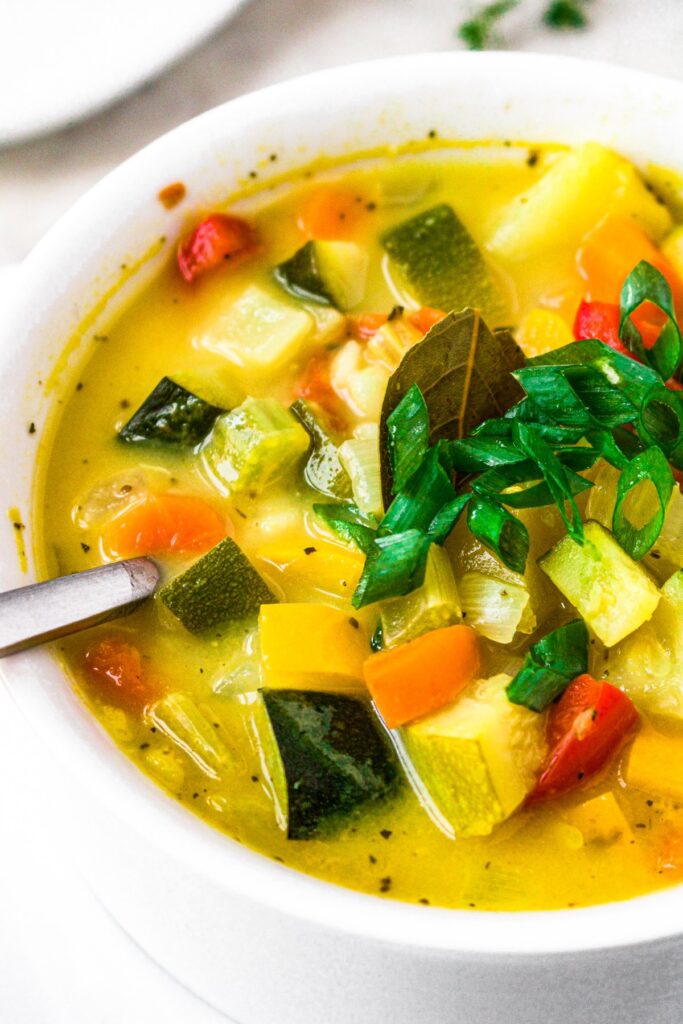
More Vegan Garden Vegetable Recipes
We’ve listed a few above, but I’d like to close this post with a few more of our top garden vegetable recipes because the whole point of growing a vegetable garden is to be able to feed your family with it!
See all our veggie-loaded recipes in our Garden Vegetable Recipes collection! Here are some of the most popular:
- Copycat Olive Garden Salad
- Vegan Zucchini Lasagna
- Vegetable Hummus Wraps
- Pineapple Jalapeno Salsa
- BBQ Tofu Bowls
- Vegan Goat Cheese and Blueberry Basil Sandwich
Gardening doesn’t have to be an overwhelming task; it should be enjoyable and even therapeutic. Start small, grow what you love, and expand as you gain confidence.
Your garden can become not just a source of fresh produce but also a source of joy, and a space for relaxation, creativity, and pride. If you have any questions, leave them below. I’d be happy to help!
Happy planting, and eating!

